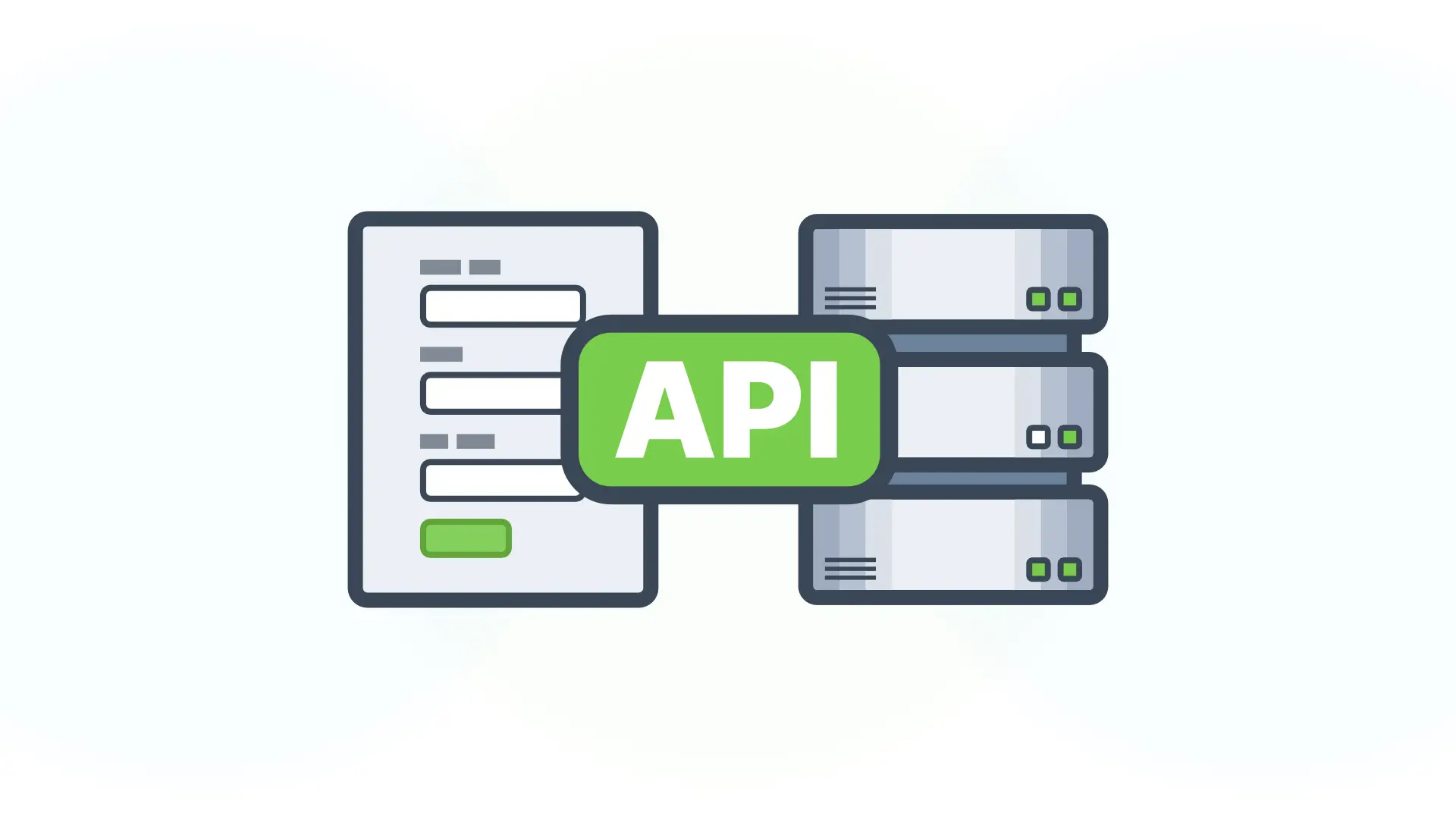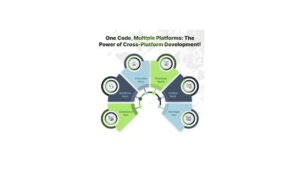The Unseen Engine: Powering Your App with Backend & APIs
In the world of mobile applications, what users see and interact with – the sleek user interface, the fluid animations, the intuitive navigation – is just the tip of the iceberg. Beneath that aesthetically pleasing surface lies a powerful, often unseen, engine: the backend and APIs (Application Programming Interfaces). While the app on your phone handles the presentation, it’s the backend that performs the heavy lifting, stores the data, processes complex requests, and ultimately, enables your app to deliver its core value.
Imagine a sophisticated restaurant: the beautiful dining area and friendly waiters are the app (frontend). But the magic truly happens in the kitchen – the backend, where ingredients are stored, recipes are followed, and dishes are prepared. The waiter’s order pad is the API, the crucial communication link between the diner’s request and the kitchen’s execution.
This comprehensive guide will delve into the critical role of backend development and APIs in the success of modern applications. Whether you’re a budding developer, a startup founder, or a business leader planning a mobile solution, understanding these foundational components is paramount to building scalable, secure, and truly functional digital products.
The Indispensable Role of the Backend
The backend (also known as the “server-side”) is the brain and muscle of your application. It handles all the logic and operations that users don’t directly interact with. Here’s what a backend typically manages:
- Data Storage and Management:
- Databases: The backend is responsible for storing, organizing, and retrieving all the application’s data. This includes user profiles, content, transactions, settings, and any other persistent information. Common database types include relational (SQL, like PostgreSQL, MySQL) and non-relational (NoSQL, like MongoDB, Cassandra, Firebase Firestore).
- File Storage: For storing larger files like images, videos, documents, or user-generated content (e.g., AWS S3, Google Cloud Storage).
- Business Logic and Processing:
- This is where the core functionality of your application resides. The backend performs calculations, executes rules, manages workflows, and processes requests from the frontend.
- Examples: Processing payments, matching users, generating recommendations, performing search queries, applying complex filters, sending notifications.
- User Authentication and Authorization:
- Verifying user identities (login, signup) and controlling access to specific features or data based on user roles and permissions. This is crucial for security and personalization.
- Server Management:
- Handling incoming requests, routing them to the correct services, and managing the overall health and performance of the servers.
- External Service Integration:
- Connecting your app to third-party services like payment gateways (Stripe, PayPal), SMS providers (Twilio), email services (SendGrid), social media APIs, or analytics platforms.
- Push Notifications:
- Managing and sending real-time notifications to users’ devices (e.g., new messages, important updates).
- Real-time Communication:
- Enabling features like chat applications, live updates, or collaborative tools through technologies like WebSockets.
- Scalability:
- Designing the backend to handle a growing number of users and increasing data loads without performance degradation.
APIs: The Language of Connectivity
An API is a set of rules and protocols that allows different software applications to communicate with each other. In the context of mobile apps, APIs act as the bridge between your app (frontend) and your backend (server-side logic and data).
- How APIs Work: When your app needs information or needs to perform an action (e.g., “fetch user profile,” “submit a new post,” “process payment”), it sends a request to the backend via an API endpoint. The backend processes this request, interacts with the database or other services, and then sends a response back to the app through the API.
- Common API Styles:
- REST (Representational State Transfer): The most popular and widely adopted architectural style for web services. It’s stateless, meaning each request from the client to the server contains all the information needed to understand the request. It uses standard HTTP methods (GET, POST, PUT, DELETE) to interact with resources.
- GraphQL: A query language for APIs and a runtime for fulfilling those queries with your existing data. It allows clients to request exactly the data they need, no more and no less, reducing over-fetching or under-fetching of data. This can lead to more efficient data transfer and faster app performance.
- gRPC: A high-performance, open-source universal RPC (Remote Procedure Call) framework developed by Google. It uses Protocol Buffers for defining services and messages, enabling efficient data serialization and transmission, especially suited for microservices architectures and high-performance inter-service communication.
Choosing Your Backend Stack: Key Considerations
Selecting the right backend technologies is a critical decision that impacts scalability, development speed, cost, and maintainability.
- Programming Language:
- Python: Excellent for rapid development, data science, machine learning, and web frameworks (Django, Flask).
- Node.js (JavaScript): Ideal for real-time applications and microservices, leveraging the same language as the frontend for full-stack JavaScript teams (Express.js, NestJS).
- Ruby (Ruby on Rails): Known for its developer-friendliness and convention-over-configuration approach, enabling fast prototyping.
- Java (Spring Boot): Robust, scalable, and highly performant, widely used for enterprise-grade applications.
- Go (Golang): Gaining popularity for its concurrency, performance, and efficiency, especially in cloud-native environments.
- PHP (Laravel, Symfony): A mature language still widely used, particularly for web applications and content management systems.
- Database:
- Relational (SQL): PostgreSQL, MySQL, SQL Server, Oracle. Best for structured data, complex queries, and applications requiring strong data consistency (ACID properties).
- Non-Relational (NoSQL):
- Document: MongoDB, Couchbase (flexible schema, good for large amounts of semi-structured data).
- Key-Value: Redis, DynamoDB (fast reads/writes, good for caching and sessions).
- Column-Family: Cassandra, HBase (highly scalable for big data analytics).
- Graph: Neo4j (for interconnected data, like social networks).
- Cloud Platform/Hosting:
- Infrastructure as a Service (IaaS): AWS (Amazon Web Services), Google Cloud Platform (GCP), Microsoft Azure. Provide virtual servers, storage, networking, giving you maximum control. Requires more configuration.
- Platform as a Service (PaaS): Heroku, Google App Engine, AWS Elastic Beanstalk. Provide a platform where you can deploy your code without managing underlying infrastructure. Faster deployment, less control.
- Serverless (Functions as a Service – FaaS): AWS Lambda, Google Cloud Functions, Azure Functions. You write code for specific functions, and the cloud provider manages server provisioning. Pay-per-execution model, highly scalable, ideal for event-driven architectures.
- Backend as a Service (BaaS): Firebase, AWS Amplify, Supabase. Offer pre-built backend services (authentication, database, storage, real-time sync, push notifications) as APIs, significantly accelerating development for simpler apps or MVPs.
Backend Architectures: Building for Scale
How you structure your backend significantly impacts its scalability, resilience, and maintainability.
- Monolithic Architecture:
- A single, large codebase where all components of the application are tightly coupled.
- Pros: Simpler to develop and deploy initially, easier to debug for small teams.
- Cons: Becomes difficult to scale, maintain, and update as the application grows. A single bug can bring down the entire system.
- Microservices Architecture:
- Breaking down the application into a collection of small, independent services, each running in its own process and communicating via APIs.
- Pros: Highly scalable (individual services can be scaled independently), resilient (failure in one service doesn’t affect others), easier to maintain, allows different teams to work on different services.
- Cons: Increased complexity in deployment, monitoring, and inter-service communication. Requires more operational overhead.
- Serverless Architecture:
- Focuses on running code in ephemeral, stateless compute containers that are fully managed by a cloud provider. You only pay when your code runs.
- Pros: Highly scalable, cost-efficient for intermittent workloads, reduced operational overhead.
- Cons: Can be more challenging for complex, stateful applications, potential cold starts (initial latency for functions), vendor lock-in.
Key Considerations for Backend & API Development
- Security: This is paramount. Implement robust authentication (OAuth 2.0, JWT), authorization, data encryption (at rest and in transit), API key management, rate limiting, and protection against common vulnerabilities (OWASP Top 10). Regular security audits are essential.
- Scalability: Design your backend from the outset to handle increasing user loads and data volumes. This involves stateless services, load balancing, database sharding/replication, caching strategies, and efficient resource utilization.
- Performance: Optimize database queries, use caching mechanisms (Redis, Memcached), minimize API response times, and employ content delivery networks (CDNs) for static assets.
- Reliability & Resilience: Implement error handling, logging, monitoring, and backup/recovery strategies. Design for failure, ensuring your app can gracefully handle backend outages.
- Maintainability: Write clean, modular, and well-documented code. Use version control (Git).
- API Design:
- Consistency: Use consistent naming conventions, URL structures, and response formats.
- Clarity: Make API endpoints and parameters easy to understand and use.
- Versioning: Plan for API versioning to allow for future changes without breaking existing clients.
- Documentation: Provide comprehensive API documentation (e.g., OpenAPI/Swagger) for frontend developers and third-party integrators.
- Monitoring & Logging: Implement robust monitoring tools (e.g., Prometheus, Grafana, ELK Stack, cloud-native monitoring) to track backend health, performance metrics, and application logs. This is crucial for identifying and troubleshooting issues quickly.
Backend as a Service (BaaS): Accelerating Development
For many apps, particularly MVPs or those with standard backend needs, BaaS solutions can drastically accelerate development:
- Firebase (Google): A comprehensive mobile and web development platform offering real-time database (Firestore), authentication, cloud functions (serverless), storage, hosting, analytics, and more. Excellent for rapid prototyping and scalable backends.
- AWS Amplify (Amazon): A set of tools and services for building scalable mobile and web applications on AWS. Provides authentication, data (GraphQL/REST), storage, APIs, and AI/ML capabilities.
- Supabase: An open-source Firebase alternative offering a PostgreSQL database, authentication, real-time subscriptions, and storage.
- Backendless: Provides visual app development, API services, database, push notifications, and more.
While BaaS solutions offer speed and reduced operational overhead, they can sometimes lead to vendor lock-in and may not offer the same level of customization as a custom-built backend.
The Future of Backend & APIs: Trends in 2025
- Serverless Dominance: For specific use cases, serverless computing will continue to grow, offering unparalleled scalability and cost efficiency, especially for event-driven architectures.
- GraphQL Adoption: Its efficiency in data fetching and flexible query capabilities will lead to wider adoption, particularly for complex applications with diverse client needs.
- Edge Computing: Processing data closer to the user (at the “edge” of the network) to reduce latency and improve responsiveness, especially relevant for real-time and IoT applications.
- AI/ML as a Service: Backend platforms will increasingly integrate AI/ML capabilities as plug-and-play services, allowing developers to easily add intelligent features without deep ML expertise.
- API-First Development: Designing APIs before building the frontend, emphasizing clear contracts and parallel development.
- Backend for Frontend (BFF) Pattern: A dedicated backend service for each specific frontend client (e.g., one for web, one for iOS, one for Android) to optimize data fetching and transformation for that client’s unique needs.
- Enhanced API Security: More sophisticated API gateways, AI-driven threat detection, and advanced authentication mechanisms to combat ever-evolving security threats.
- Real-time Everything: The demand for real-time features (live collaboration, instant updates, personalized feeds) will drive further innovation in real-time backend technologies.
Conclusion
The backend and APIs are the foundational layers that bring your mobile application to life. They are the unseen forces that enable complex functionalities, manage vast amounts of data, ensure security, and allow your app to scale from a handful of users to millions.
While frontend design captivates users, it’s the robust, scalable, and well-designed backend that sustains their experience and truly delivers on your app’s promise. Investing wisely in your backend architecture, choosing the right technologies, prioritizing security, and embracing modern API design principles are not just technical decisions – they are strategic imperatives for building a truly successful and future-proof digital product. Don’t let your app be just a pretty face; give it the powerful engine it deserves.




